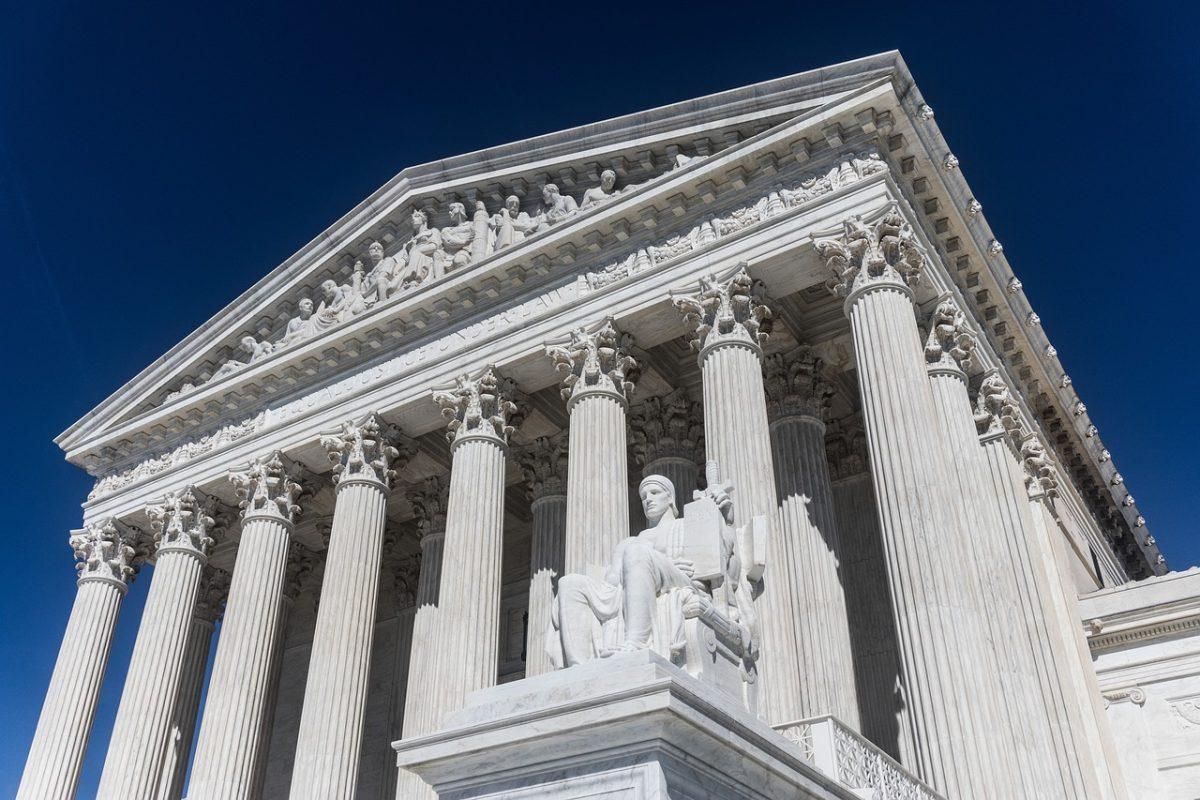The Supreme Court is home to nine justices who rule on cases regarding interpretations of the Constitution, violations of federal laws, and controversy between states. The justices rule in favor or dissent of each case and share their opinions on them. This important role has only been served by six women in the Court’s 235 year existence.
Sept. 21, 1981 was a momentous day in American history, as it marked Sandra Day O’Connor’s confirmation of being the first-ever woman to serve as a Supreme Court justice. O’Connor was born in 1930 and was raised on her family’s ranch in Texas. In 1946 she was accepted to Stanford University. She would later enroll at Stanford Law School and graduate near the top of her class. However, due to her gender, this feat did not guarantee her a job. She was eventually employed as a deputy county attorney in San Mateo, California, after she offered to work without pay or an office.
O’Connor was elected as an Arizona state senator in 1969 and during her time worked towards changing discriminatory state laws against women. O’Connor was appointed to the Supreme Court by former President Ronald Reagan and served from 1981 till her retirement on Jan. 31, 2006.
During her time on the court, she was “often at the center of the Court’s deliberations,” and was labeled as a “swing vote,” according to an exhibition on O’Connor by the Supreme Court. She voted on many controversial cases such as Texas v. Johnson (1989), which ruled that flag burning was protected under First Amendment rights. She also voted in favor of Planned Parenthood v. Casey (1992), which upheld abortion rights as previously established by Roe v. Wade (1973).
Justice O’Connor passed away on Dec. 1, 2023 at the age of 93. Her work both in and out of the Supreme Court was incredibly important, and her appointment as a justice paved the way for young women everywhere to go after their goals.
Ruth Bader Ginsburg was the second woman and first Jewish woman to be appointed to the Supreme Court. Ginsburg was born in 1933 and was raised in Brooklyn, New York. She earned her bachelor’s degree from Cornell University, before attending both Harvard and Columbia Law School.
Despite graduating first in her class from Columbia Law School, Ginsburg struggled to find a job as a lawyer due to being a woman and a mother. She worked jobs as a law clerk and research associate, as well as being a professor of law at Rutgers and Columbia University. Ginsburg later drafted or contributed to many Supreme Court briefings on the issues of gender discrimination, and argued six cases before the Court.
On Aug. 3, 1993, former President Bill Clinton appointed Ginsburg as a Supreme Court justice. During her time on the Court, Ginsburg constantly advocated for women’s rights in cases like United States v. Virginia (1996), which removed a male-only admission policy at the Virginia Military Institute. Justice Ginsburg passed away on Sept. 18, 2020, and will forever be known as a progressive feminist icon and an inspiration to many.
Sonia Sotomayor made history by becoming the third-ever woman and the first-ever Hispanic woman to serve as a Supreme Court justice. Sotomayor was born and raised in the South Bronx, New York, and attended Princeton University and Yale Law School.
Unlike her predecessors in the Supreme Court, Sotomayor immediately began working as an assistant district attorney in Manhattan. She eventually joined the Pavia & Harcourt law firm and became a partner in 1988. Sotomayor often did pro bono work — legal work without payment — which set her apart from other lawyers. Her extensive work resulted in her appointment for federal judgeship. She worked as a judge for nearly 11 years before being nominated for the Supreme Court by former President Barack Obama.
So far, in her time on the Court, Sotomayor has ruled on many important and controversial cases. Notably, she voted in favor of Obergefell v. Hodges (2015) which legalized same-sex marriage, and against Dobbs v. Jackson Women’s Health Organization (2022), which controversially overturned Roe v. Wade (1973). In Aug. 2024, Sotomayor will have been on the Supreme Court for 15 years. She continues to advocate for the rights of minorities, women, and those who are less fortunate.
Elena Kagan is the fourth-ever woman to become a Supreme Court justice and made history by being a justice alongside two other women. Kagan was born and raised in Manhattan, New York, and attended Princeton University and Harvard Law School.
Post-law school graduation, Kagan quickly rose from her job as a clerk to a professor to a dean of Harvard Law School. She became the first woman to become the United States (U.S.) solicitor general in 2009, and in 2010 was appointed to the Supreme Court by former President Barack Obama.
In her time thus far on the Court, Kagan has sided with the majority in three landmark cases. King v. Burwell (2015) upheld a critical component of the Affordable Care Act, more commonly known as Obamacare. In addition, she voted in favor of Obergefell v. Hodges (2015) which legalized same-sex marriage. Finally, she sided with Sotomayor in dissent on Dobbs v. Jackson Women’s Health Organization (2022).
Amy Coney Barrett is the fifth woman to serve on the Supreme Court. Barrett was born and raised in New Orleans, Louisiana, and attended Tennessee’s Rhodes College and Indiana’s Notre Dame Law School. Barrett worked as a law professor at Notre Dame before being nominated by former President Donald Trump to the U.S. Court of Appeals for the Seventh Circuit in May 2017.
She stayed on the Seventh Circuit bench for three years, until her nomination to the Supreme Court in Sept. 2020, also by former President Trump. Barrett took the Supreme Court seat of Ginsburg after her death.
Prior to her three years on the Court, Barrett voted on cases such as Kanter v. Barr (2019), where she voted that those convicted of a nonviolent felony should still have the right to bear arms. Once on the Court, Barrett caused controversy when she was the only woman on the court to vote in favor of Dobbs v. Jackson Women’s Health Organization (2022), along with Justices Alito, Thomas, Gorsuch, and Kavanaugh.
Ketanji Brown Jackson is the newest and sixth Supreme Court justice to be a woman, and is also the first-ever Black woman to serve as a justice. Jackson was born in Washington, D.C. but grew up in Miami, Florida before attending Harvard University for both undergraduate and law school.
In 2012, Jackson was nominated to the U.S. District Court in Washington, D.C. by former President Obama. In 2021, she was nominated to the U.S. Court of Appeals for the D.C. Circuit by President Joe Biden. President Biden later nominated Jackson for the Supreme Court, to fill former Justice Stephen Breyer’s seat in Feb. 2022.
Jackson has been on the Court for a little less than two years and has already weighed in on crucial topics, such as Students for Fair Admissions v. Harvard (2023), which removed affirmative action from university admissions. Her appointment to the Court as both the first former federal public defender and as a Black woman has shown that anyone with enough ambition can achieve their goals, no matter how large.
Greg Garcia, a social studies teacher at Franklin, shared his insights on these women and their impact. “O’Connor’s confirmation was a seismic victory in the feminist movement, paving the way for others such as Justices Ginsburg [and] Sotomayor.” He went on to say that “there are almost always [those] who follow in the path of trailblazers, and seeing where those trails go is one of the most important parts of professional history.” As Garcia explained, the trail blazed by O’Connor has created opportunities for her fellow justices and women everywhere pursuing legal careers, one being Franklin’s very own Josephine Emanuel-Mitchell. As a senior in the law program, Emanuel-Mitchell believes that “all these women were influential in their own way.”
She had a chance to meet Justice Kagan at a judicial conference in Washington, D.C. Emanuel-Mitchell explained that while their conversation was brief, Kagan’s accomplishments reminded her that she is intelligent and worthy of success. “As a woman in law, I often feel looked-over, ignored, and made to feel dumb; I love to see other women succeeding in the legal world,” Emanuel-Mitchell shared.
From being denied jobs due to gender, to serving for multiple decades on the Supreme Court, Justices O’Connor and Ginsburg’s accomplishments have inspired young women around the world. Justices Sotomayor, Kagan, Barrett, and Jackson are following in their footsteps and making differences for generations of women to come. The life and legacies of all six women who have served as justices are incredibly momentous and should be remembered by all.



































